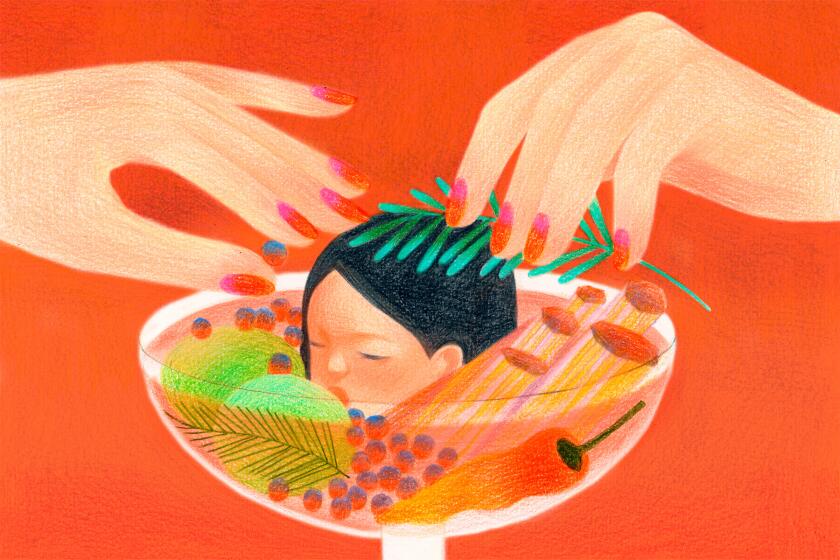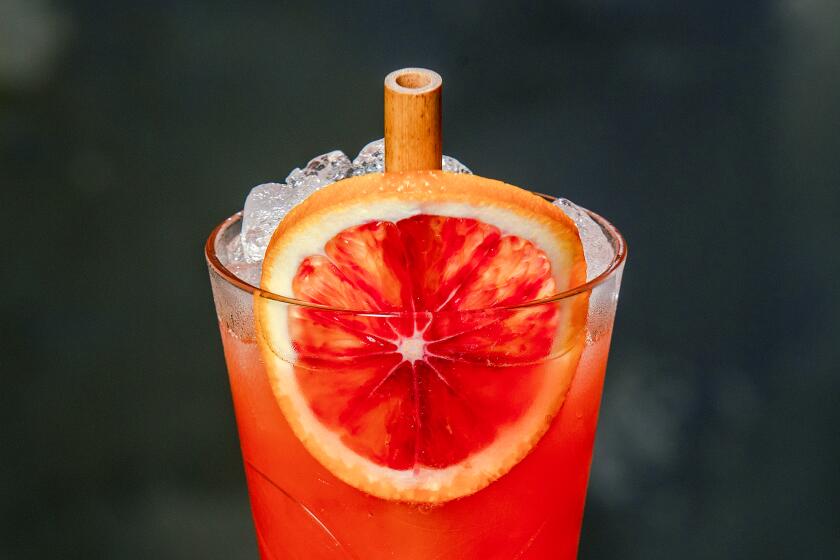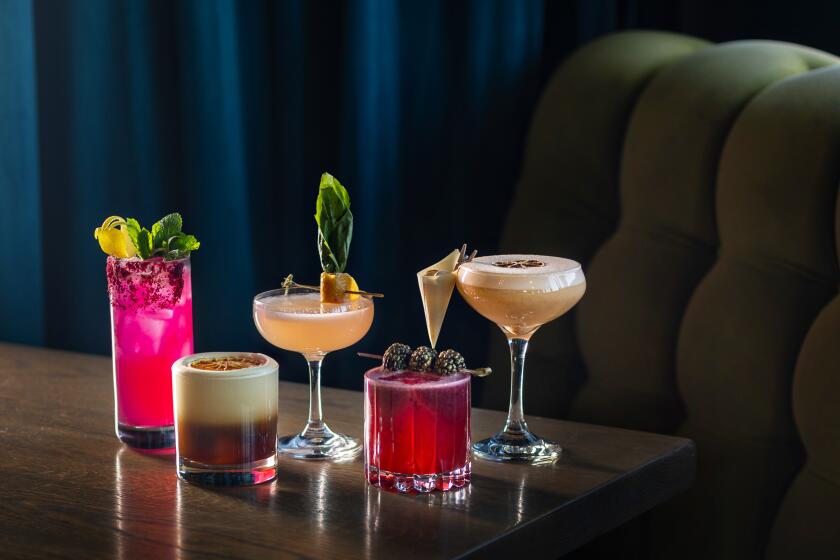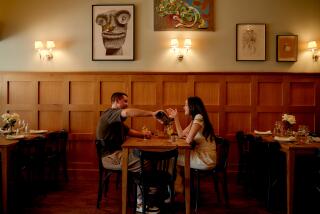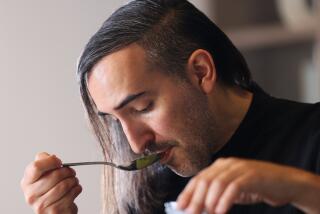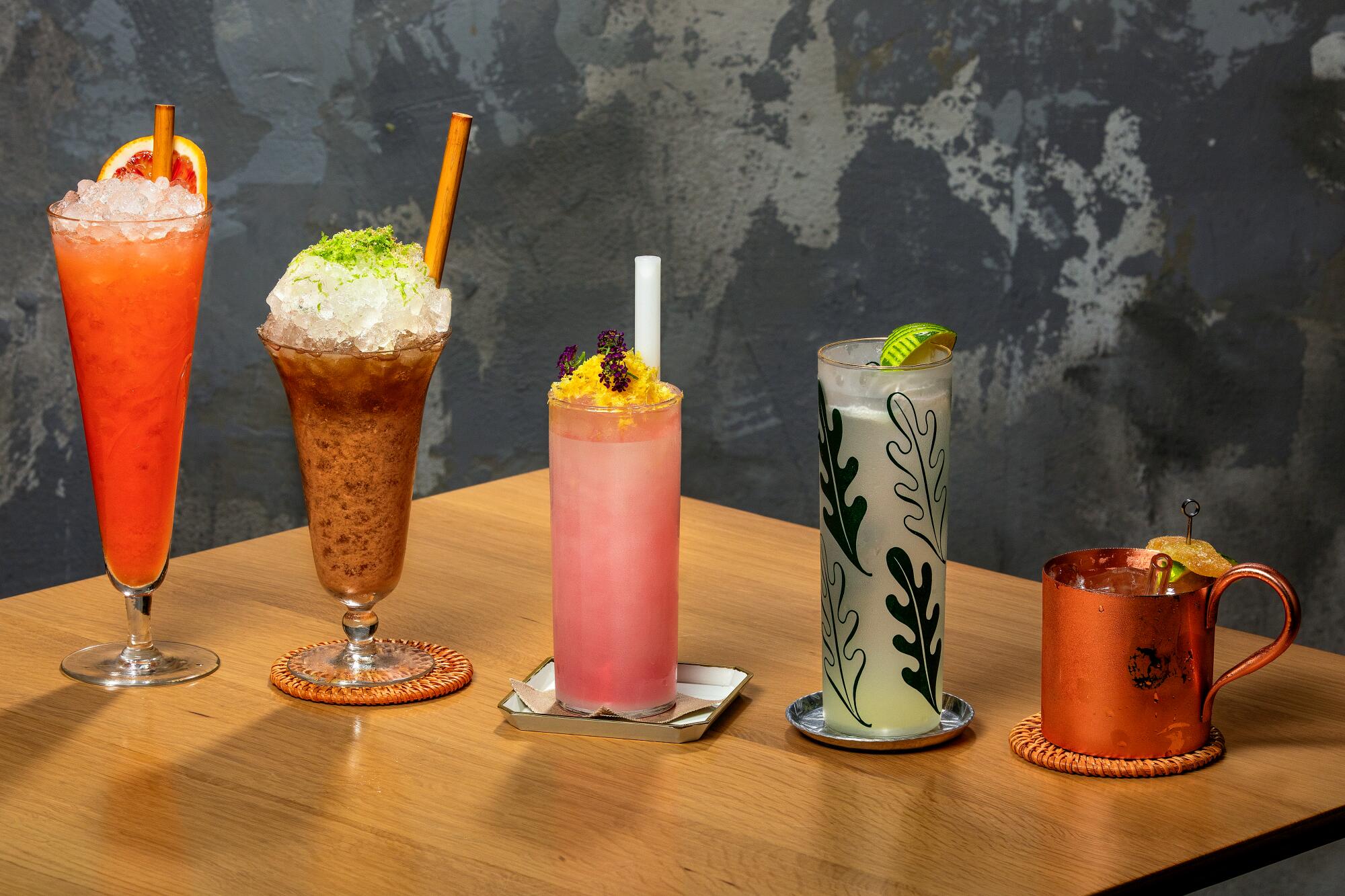
Even before the first shivery nip, the sight of the Melona Colada cocktail served at Kato in August eased the high fever of summer.
Lead bartender Han Suk Cho had mounded freshly shaved ice into a short-stemmed tulip coupe glass, over which she drizzled a pale, creamy orange drink. Its color brought to mind start-of-the-season peach flesh, the shade of marker an illustrator might use to draw a beach and certainly ripe melon. The base of the mixture was Sugar Cube, a cantaloupe hybrid with concentrated sweetness.
Cho blended the pureed fruit with Navarro Vineyards’ Gewurztraminer juice, which teased out the melon’s floral musk; nailao, a fermented Chinese milk dessert also known as Beijing yogurt; and a brightening dose of lime juice. The name — and flavors — riffed on Melona Bars, the Korean honeydew ice pops loved by Kato’s chef and co-owner Jon Yao, and by Cho too.
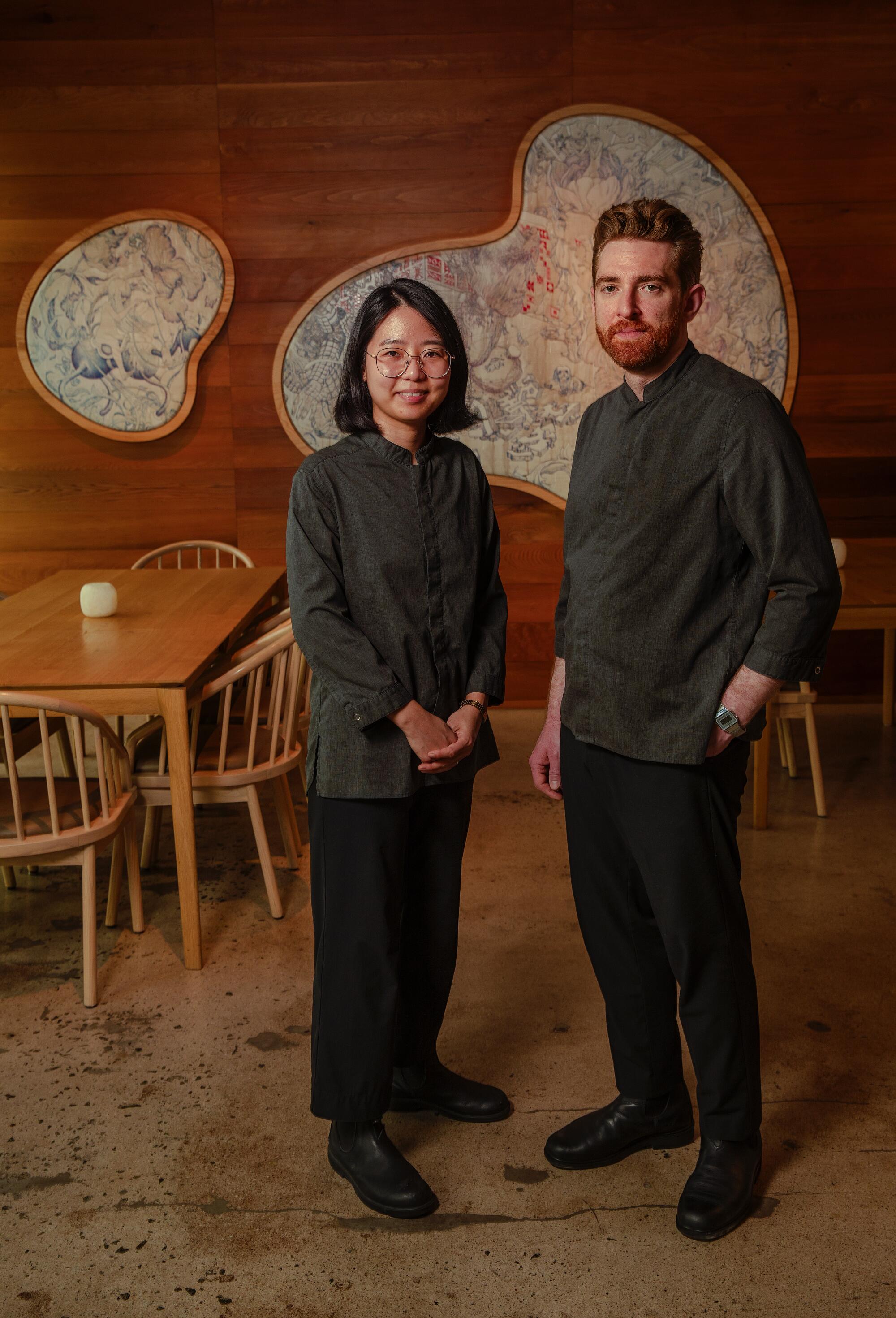
Her creation, which she’d lightly fine-tuned with bar manager Austin Hennelly for the menu after dreaming it up on the fly at a regular’s request, modeled everything a cooling cocktail should be: rich in texture, frosty but also impeccably fresh, complex and harmonic in its sweetness. Its elements added up to a delicious sum, and it had no alcohol. None was needed. It tasted complete in every sense.
Cho’s colada epitomizes the overall greatness of Kato’s beverage program, which is astounding in its span and detail.
The bar menu at the Arts District restaurant goes either deep or deeply considered on every major category of spirits, including, among nearly 70 global options for whiskeys, a dozen choices from Taiwan in a nod to Yao’s heritage. The wine list is one of those overwhelming bound documents that most of us will scan politely, close and then turn to Ryan Bailey, the restaurant’s director of operations and sommelier, for guidance on a bottle. Or we’ll happily surrender to his artful pairings tailored for Yao’s tasting menu.
The cocktails made by Hennelly and Cho are elegant visual feats: highballs, coupes, snifters and other shapes made of glass that feels refined to the touch, brimming with tufts of mint or citrus carved into interesting geometries or thick foam that rises uniformly over the edge, resembling a perfect souffle.
The drinks the vessels contain register as innovative not for their outlandishness but for their shift in perspective. Behind the bar, crafting cocktails, Hennelly and Cho are like Shakespearean actors in a famous scene, delivering line readings in ways you’ve never quite heard before. A sly tonal shift, a twist of meaning, and familiar notions of juleps, punches, cobblers and sours suddenly open to new expressions.
Plus, a tasting of several nonalcoholic spritzes and elixirs for the sober and sober curious.
This is especially true in their nonalcoholic interpretations. Riffs on spritzy aperitifs, mint-laced mules and tropical refreshers are bright and structured and herbaceous. They merge their talents from different schools: Hennelly, whose father ran a wine shop, learned the bar trade by incorporating high-tech gadgetry as a means to efficiency and deliciousness. Cho, who has a musical background, is a rarity who forged a career making nonalcoholic drinks in fine-dining restaurants across California. Her best ideas, like the melon colada, tend to spring from improvisation. Their talents dovetail into a word they repeat together and separately to describe their work: freshness.
Their NA cocktails, along with the NA beverage pairings they help create to match chef Yao’s Taiwanese-inspired tasting menu, are easily the most rigorously conceived and flat-out impressively delicious examples of such efforts in Southern California.
It isn’t like nonalcoholic cocktails are a shimmery fad on the horizon appearing only for our country’s now-annual tradition of Dry January, or the more recently conceived Sober October. “Mocktails” (a word I dislike; let’s normalize that a cocktail can be nonalcoholic) have been part of the mainstream for well over a decade.
In recent years polls consistently suggest that millennials and Gen Zers are consuming less alcohol than older Americans, citing health concerns and overall lifestyle considerations. A study of 10 major global markets, including the United States, found that the growing demand for no- or low-alcohol products exceeded $11 billion in 2022, a sharp increase from $8 billion in 2018. In Los Angeles, shops like Soft Spirits in Silver Lake and New York-based Boisson, with locations in Studio City and Brentwood, sell an ever-expanding range of NA beverages.
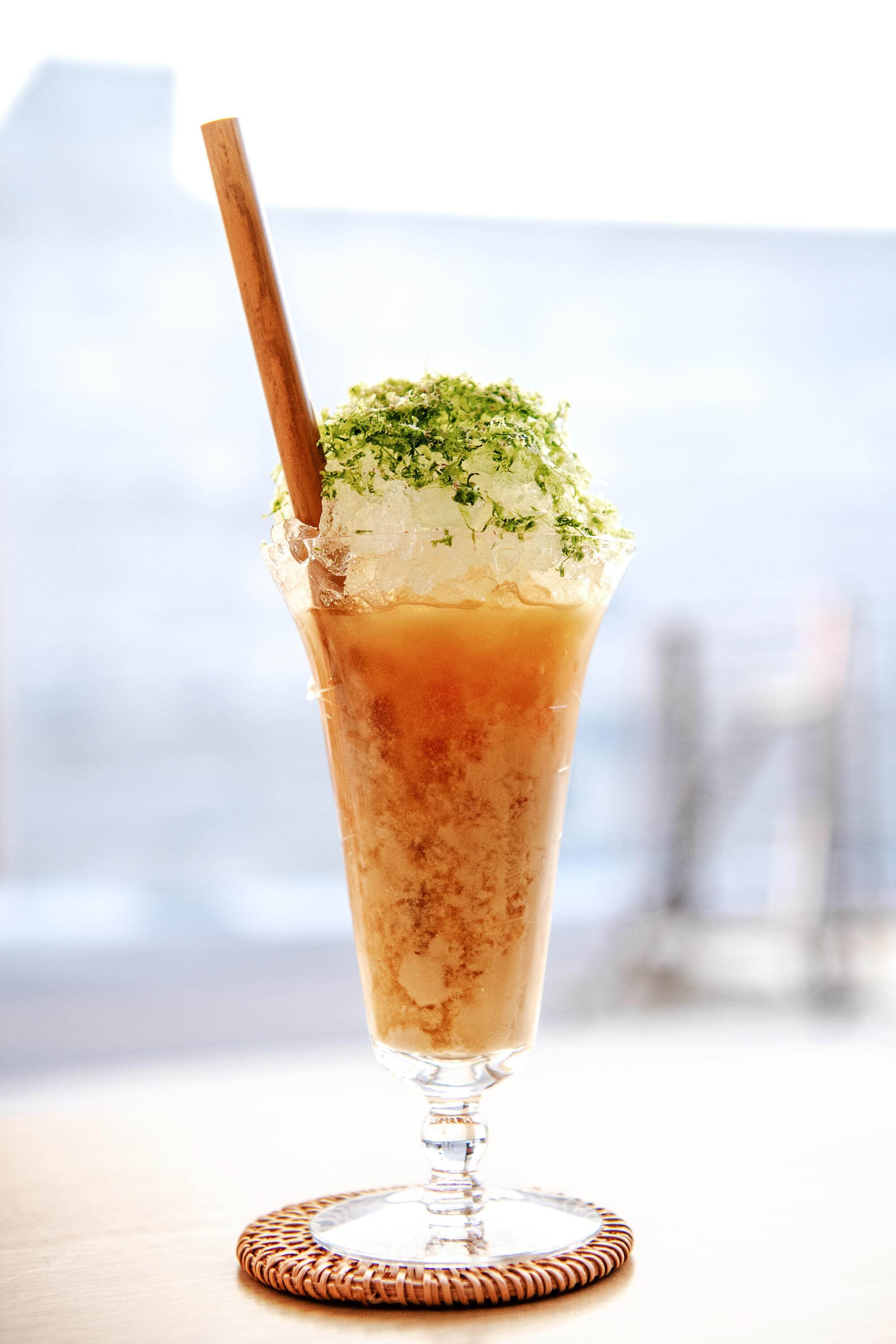
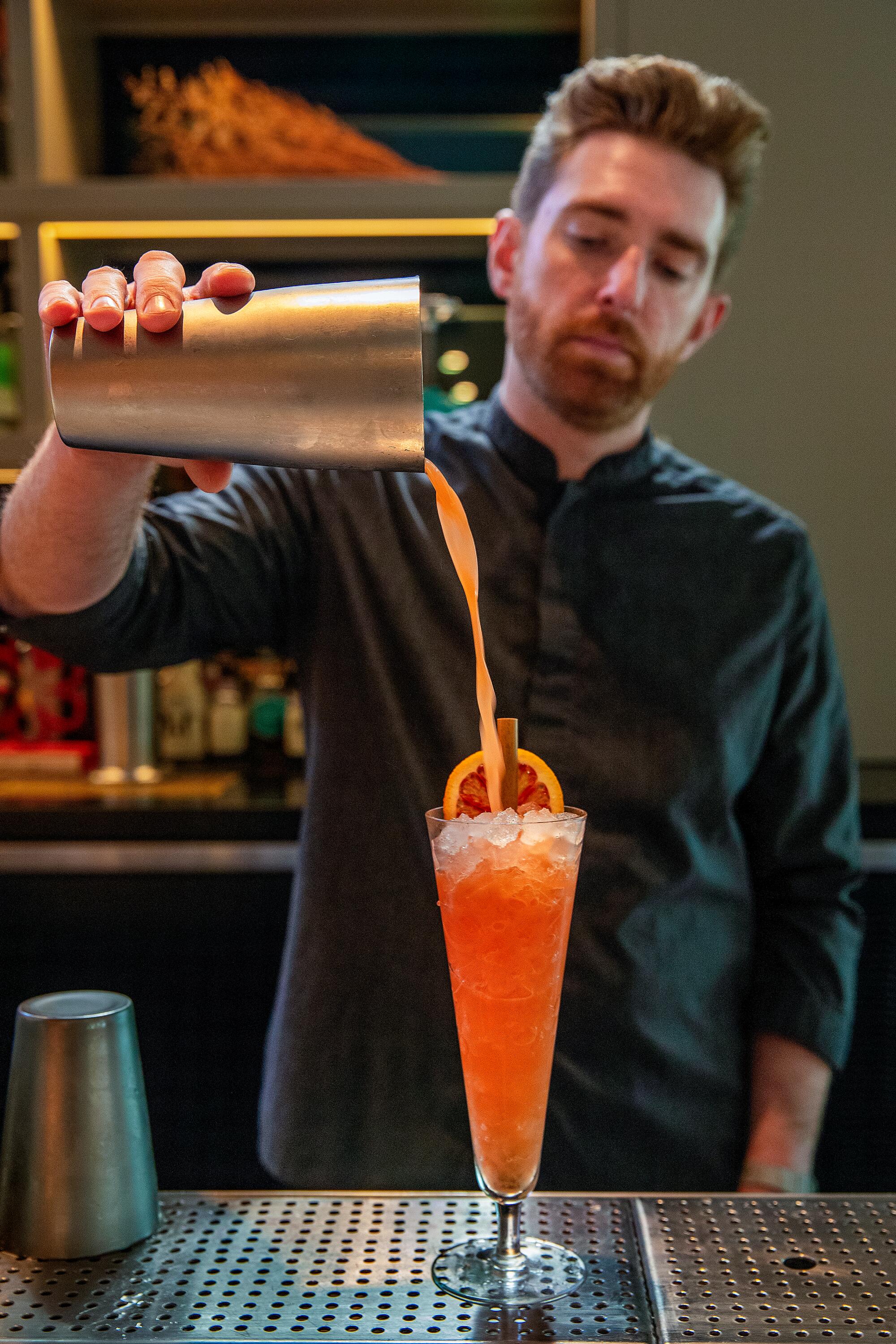
Definitions of excellence are evolving in real time, but increased availability and visibility don’t always equate to an abjectly pleasurable drinking experience, as I’ve learned over the past year.
After writing about restaurant culture for more than two decades, I’ve started moderating my alcohol intake. The reasons are proverbial: As much enjoyment as I derive from dry martinis and white Burgundies, my sleep is far better when I cut back on alcohol, and mornings are less of a struggle. I’m a Gen Xer who wants to be well growing older.
The NA cocktail options I’ve tried on menus at Los Angeles restaurants and bars have been a mixed lot. Plenty of them hew to an earnest formula: something like two or three juices combined with spiced syrup and a splash of soda. Or, the newer default, an NA negroni.
They can taste perfunctory, reminding me of kitchens without pastry chefs who throw together a crème brûlée and easy chocolate cake because customers demand it. I particularly find products directly marketed as clear spirit substitutes still lacking: They neither directly evoke, say, gin or tequila, nor do they taste like something good, something aromatic or botanical, on their own. The concoctions that bartenders contrive when using them often come across as if their main goal is to mask the product’s often acrid, muddled or watery deficits.
The flavors of bittersweet herbal liqueurs have so far been more successfully replicated, which is why bartenders across the country embraced St. Agrestis’ Phony Negroni, among the best of them to my palate, after it appeared on the market two years ago.
The recipe for this nonalcoholic version of a classic Garibaldi cocktail mixes the Japanese beverage Calpico and mandarin juice.
Sophisticated NA cocktails that don’t rely on bottled spirit-free products can be laborious, but the results can change drinkers’ perceptions of the possibilities. This has never been better documented than in “Good Drinks,” written by Julia Bainbridge and published in 2020.
Bainbridge, a longtime food writer and editor, spent 2018 driving across America, collecting recipes from bartenders advancing the genre. She insightfully structures the chapters by the time of day the drinks would appeal, and she includes a “commitment level” rating from one to four.
The possibilities range from a four-ingredient spritz centered on verjus, the pointedly acidic juice of unripened grapes, to endeavors that lean culinary — cooking a vinegary-sweet mushroom shrub, for example, or simmering homemade versions of vermouth. Los Angeles’ contributions to her compilation include an aperitivo-appropriate combination of red verjus and bitter, citrusy chinotto soda, with garnishes of orange and olives, by Tobin Shea, bar director at Redbird.
“Good Drinks” has become an important textbook for modern NA cocktails. The book codifies a tenet: When it comes to NA excellence, pull from accumulated wisdom, reference established favorites to give imbibers a benchmark by which to understand a drink, but keep experimenting. Keep pushing to understand what appeals as a leisure beverage and why, and how tastes might shift. The language is still being written.
Hennelly and Cho’s cocktails at Kato embody this momentum.
Hennelly made his first NA cocktail at Majordomo. He was part of the restaurant’s opening team in 2018. The drink played on a gin and tonic. For the base Hennelly chose bitter melon, which referenced the Korean flavors on the restaurant’s menu and also naturally possesses quinine, an alkaloid most commonly derived from the bark of the cinchona tree that gives tonic water its signature sharpness.
His process involved clarifying the melon’s juice through the Spinzall centrifuge. The machine was specifically developed for culinary use by Dave Arnold, who ran New York’s now-closed Booker and Dax, an avant-garde cocktail bar that, like Majordomo, was under David Chang’s Momofuku umbrella. Hennelly began his bartending career there, after a friend helped him land a job as a bar back.
Sip on sake, craft beer, natural wines or agave spirits or try a soothing tea or uplifting coffee drink at one of our critic’s favorite places to drink in Los Angeles.
“I was operating a centrifuge and acidifying orange juice and pineapple juice as prep work before I ever learned how to bartend,” says Hennelly. “So that’s always been my way of thinking.”
At Kato the initial bitter melon brainwave morphed into the Garden Tonic, a drink that never leaves the menu. Hennelly frames the drink around Korean cucumber, grown by Girl & Dug Farm in San Marcos, a farm with which Yao has a close relationship. Its light, concentrated crispness offsets the bitter melon’s edge. Hennelly steeps the combined vegetable juices with bai mu dan, a delicate white tea that softens the flavors.
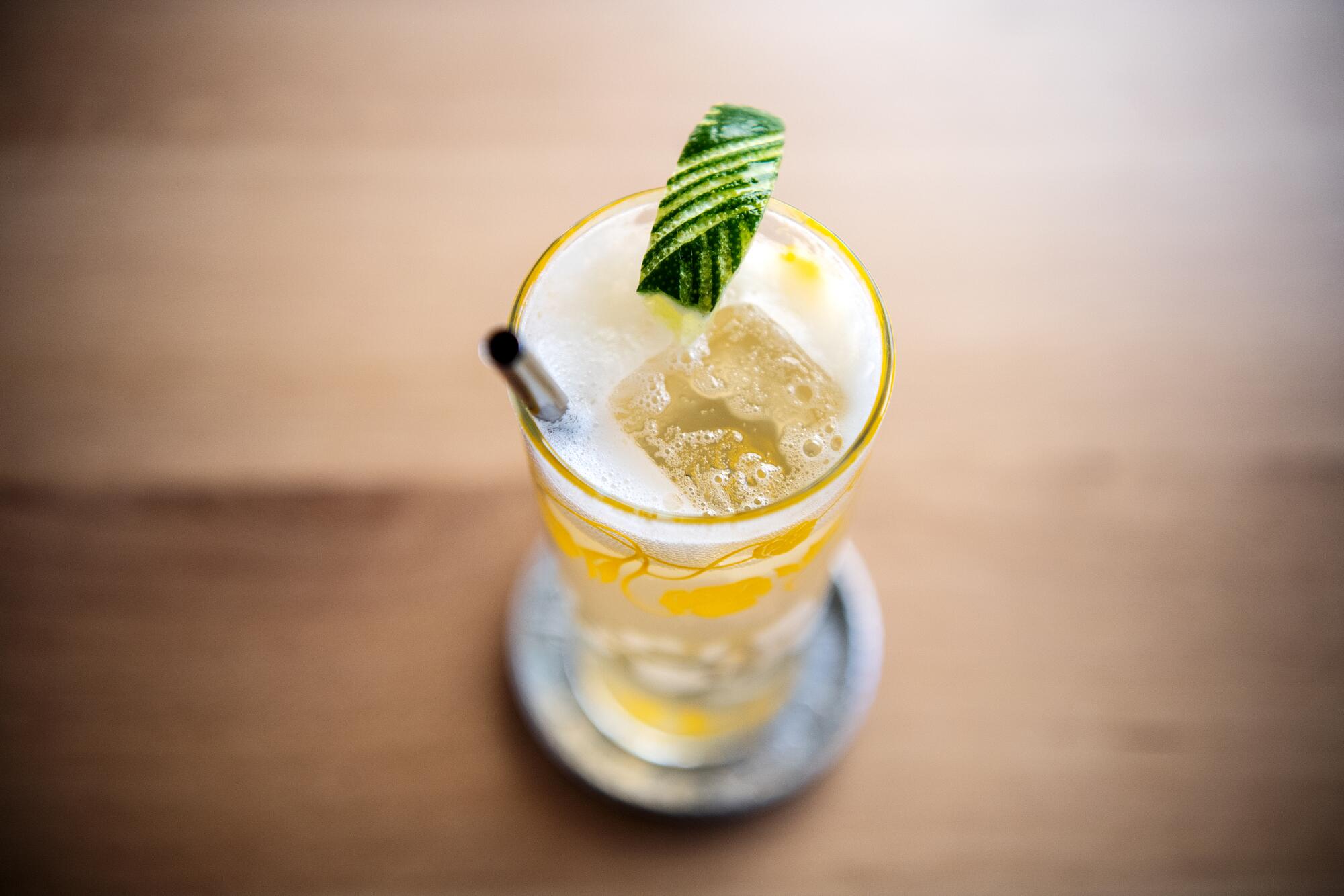
Things now get technical for the sake of “body” — one way to describe the elusive, slick, gratifying texture that alcohol innately imparts to beverages and which is hard to replicate in NA cocktails. Hennelly stirs in a splash of Hamilton Petite Canne Sugar Cane Syrup from Martinique for its direct sweetness and viscosity; a solution of malic, citric and succinic acids to approximate the tartness of lime juice; and vegetable glycerin to contribute body.
Finally, the mixture is bottled and its contents are pressured overnight via an in-house carbonation system (another Arnold method), so the end result is sparkling without the diluting addition of soda.
When you take a first sip in a clear, etched glass, none of the labor and the chemistry registers on the palate. In the vigorous bubble and the back-beat astringency there’s a hint of the burn that can so appeal in alcoholic beverages. There is a spine to the texture, a gratifying weight. And there is above all the crucial element for Hennelly: a sense of freshness.
Bailey hired Hennelly in late 2021 as Kato was readying to move from its original location in a cramped, spare corner space in a West L.A. strip mall and into its current, much larger location at Row DTLA. For Kato’s first five-plus years, Yao and business partner Nikki Reginaldo couldn’t acquire a liquor license. The team poured a half-decade of pent-up energy into the drinks program, giving Hennelly the creative license and equipment to follow the potentials in NA cocktails.
Cho knew about Hennelly’s pursuits when she applied for a job at Kato two years ago. She had started her career in fine-dining restaurants at Providence, after a first splurge meal there transfixed her. In the flow and connectivity of the seafood-focused tasting menu she felt correlations to her studies of symphonies as a classical music composer. She ended up working briefly at Providence, and then at Single Thread in Sonoma, the luxury restaurant run by chef Kyle Connaughton and farmer Katina Connaughton that marries culinary notions of Japan and California, and then back down the coast at Dave Beran’s now-closed Dialogue in Santa Monica.
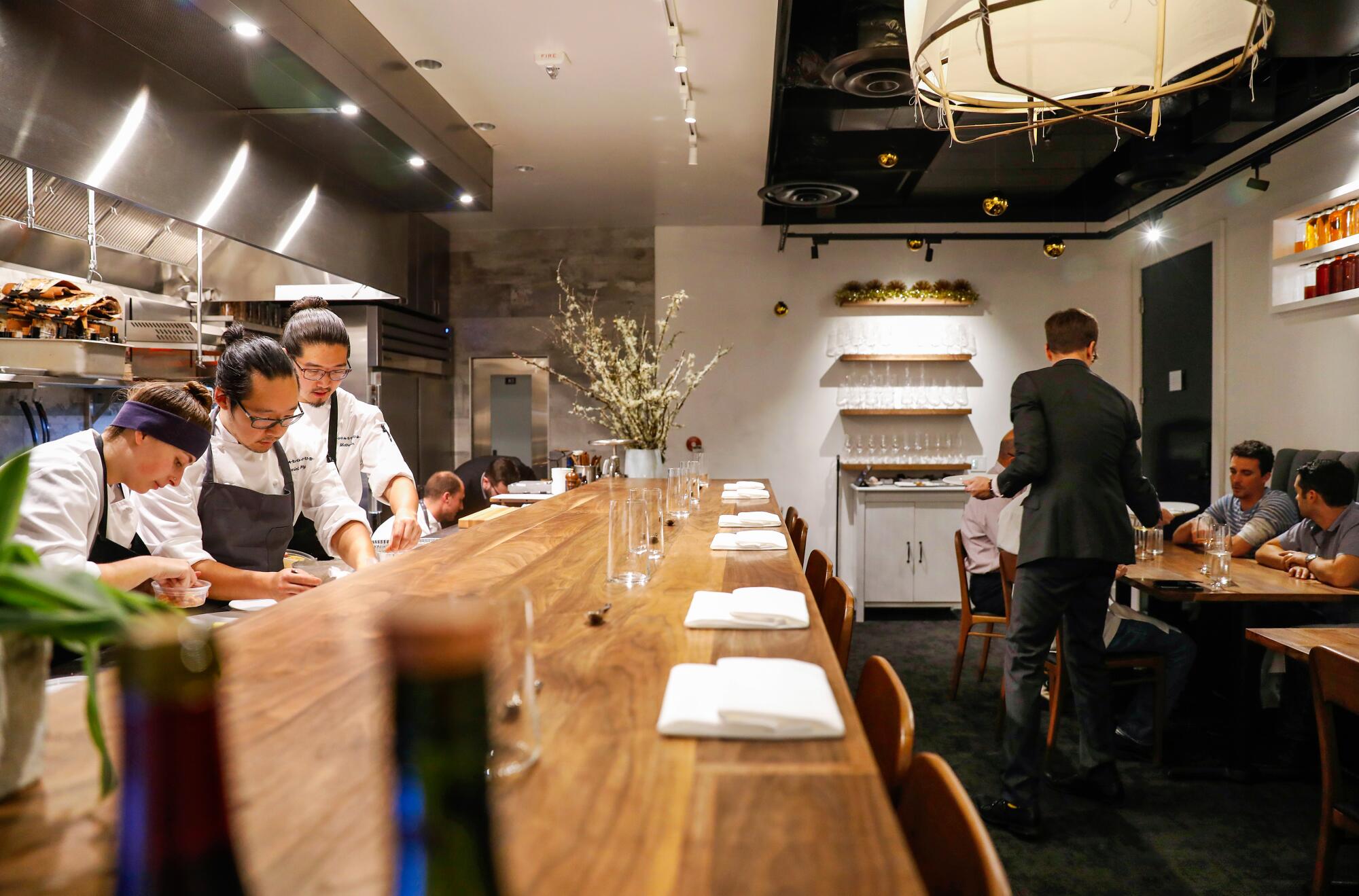
At Single Thread and Dialogue Cho focused on NA beverage pairing programs. Her blossoming professional specialty had personal roots. She had grown up in Korea with a mother who didn’t consume alcohol. Cho would watch her sip water while everyone around her was drinking.
“I thought that was very unfair,” says Cho. “So I always had the urge and the curiosity to make nonalcoholic adult beverages.” At 12 years old she started combining things like apple juice and tea to give her mom something a little special to nurse.
At Dialogue in particular she pushed herself to experiment with what she calls “kitchen byproducts” — salvaging herb stems to steep for syrups, roasting and steeping onion peels to add a savory pheromone to drinks, turning any leftover fruit into purees or preserves or vinegars. I see how it carries over to her work at Kato: To match a fish course on the restaurant’s NA pairing, for example, the team steeps Chardonnay juice with pomelo skin and kombu. The citrus pushes the flavor in brighter directions, and the kombu contributes salinity and the ever-sought-after body.
Hennelly and Cho’s merged ethos isn’t didactic. Seasonality keeps their drinks in constant, engaged flux, but they don’t drift into purism. They use the alcohol-free mixers on the market that impress them, including botanical-forward Riverine by Amass and citrusy Vibrante by Martini & Rossi, usually augmenting them with herbs or teas. Riverine infused with lime, basil, mint and a stinging dose of ginger forms the base for their shiso mule.
The Kato staff is always quick to say that the sweep of drink choices exists first to complement Yao’s tasting menu, which sets the pace for how quickly dishes and beverages can change with the calendar and with inspiration. The chef deconstructs childhood memories of his family’s soups, steamed fish, spicy tofu breakfasts and fermented vegetables into food that is as intellectually satisfying as it is nourishing.
But really, the restaurant’s approach to beverages has a lifeforce all its own. Is it a surprise, given broad public interest and what Hennelly and Cho are specifically achieving, that other Los Angeles tasting-menu restaurants like Providence and Manzke have recently developed their own seasonally driven, from-scratch beverage pairings?
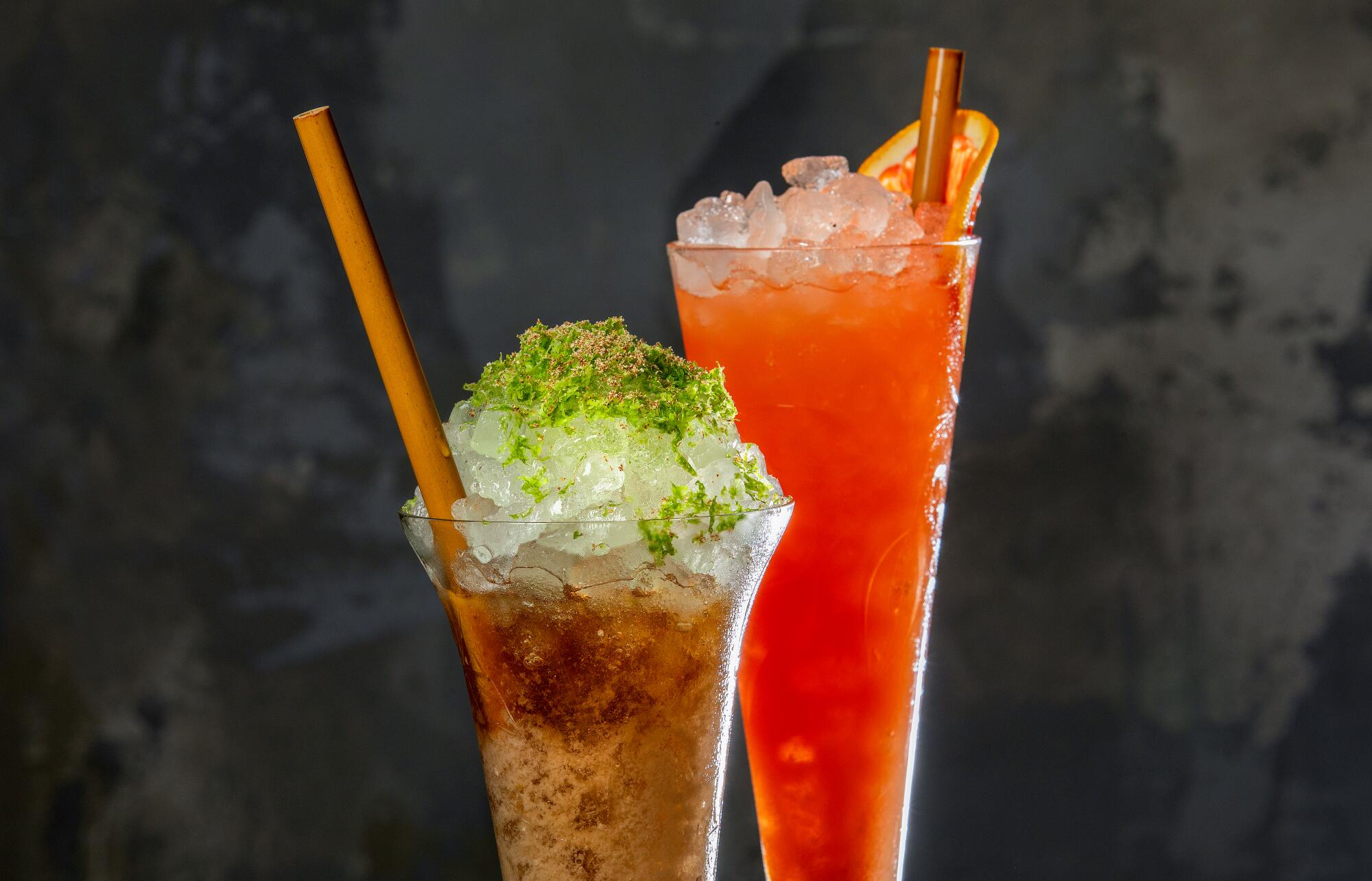
There are other NA bright spots to look forward to in 2024 in Los Angeles.
In Chinatown on New Year’s Eve, Stacey Litoff-Mann and actor Summer Joy Phoenix christened Stay Zero Proof Cocktail Lounge, L.A.’s first standalone alcohol-free bar. To develop their program, they hired Derek Brown. He previously operated the Columbia Room and Passenger in Washington, D.C., a pair of businesses serving wizardly drinks that helped lead the American cocktail renaissance at the turn of the millennium.
More recently Brown has been focusing on low- and no-alcohol beverages; in 2022 he wrote a book on the subject called “Mindful Mixology.” Expect Stay’s drink menu to mingle showmanship with imaginings that combine juices and bitters with his recipes for tinctures and spice-infused syrups.
Local ambition in the NA space is accelerating, but it’s nascent. Delicious breakthroughs will need to meet customers’ value perceptions. Branded products will continue to improve. More bartenders will challenge themselves to epiphanies.
To know the benchmark right now, though, go grab a couple of unreserved seats at Kato’s bar, have a conversation with Hennelly and Cho, order a Garden Tonic (or a melon colada come summer again) and consider the future, sip by sip.
More to Read
Eat your way across L.A.
Get our weekly Tasting Notes newsletter for reviews, news and more.
You may occasionally receive promotional content from the Los Angeles Times.
